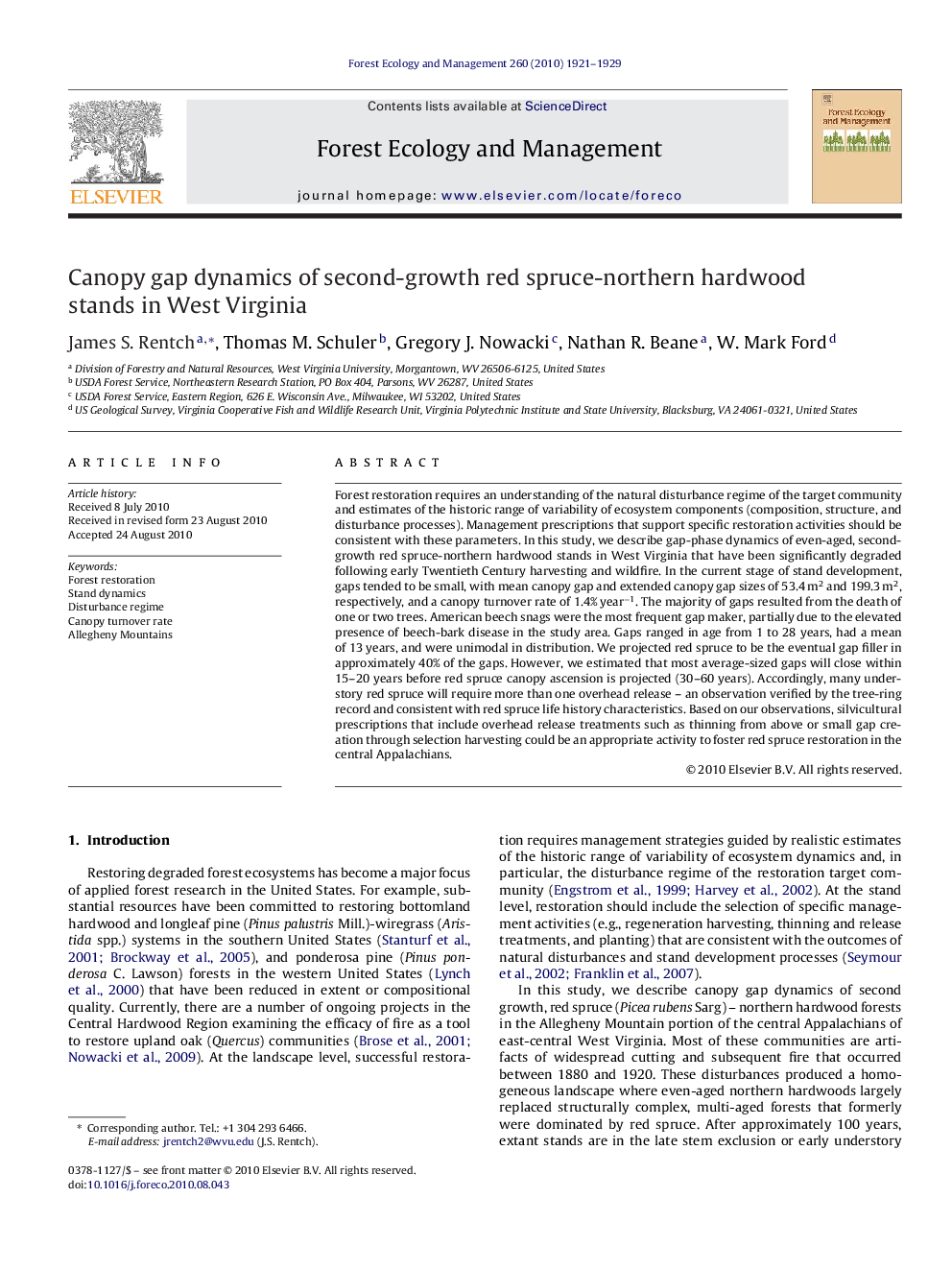| Article ID | Journal | Published Year | Pages | File Type |
|---|---|---|---|---|
| 10250501 | Forest Ecology and Management | 2010 | 9 Pages |
Abstract
ⶠMean canopy gap and extended canopy gap sizes were 53 m2 and 199 m2, respectively. ⶠ4.7% of the study area was in canopy gaps, with an annual canopy turnover rate of 1.4% yearâ1. ⶠAmerican beech snags, associated with beech-bark disease, were the most common gap maker. ⶠWe project that 4 of 10 gaps will be captured by red spruce saplings, however most will require more than one release.
Related Topics
Life Sciences
Agricultural and Biological Sciences
Ecology, Evolution, Behavior and Systematics
Authors
James S. Rentch, Thomas M. Schuler, Gregory J. Nowacki, Nathan R. Beane, W. Mark Ford,
